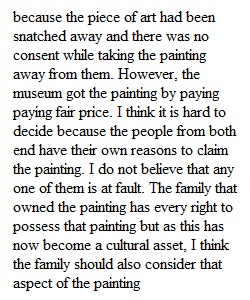


Q The restitution of World War II–era assets is a complicated business. Please watch the following profile of Claude Cassirer and his family's Pissarro. For review: • The Pissarro was sold by Cassirer's grandmother in 1939 for $360 to escape Berlin. • The painting was auctioned in Berlin in 1943. • It was sold to a collector in St. Louis in 1952. • Cassirer's family received a small compensation from the German government in 1958. • The painting was sold to Thyssen-Bornemisza in 1976. • The Thyssen-Bornemisza Collection opened in Madrid in a joint venture with the Spanish government in 1992. • Claude Cassirer discovered the whereabouts of the painting in 2000. • Cassirer filed a suit against the Kingdom of Spain in 2005. Please read an update to the Cassirer story from 2020 here: A Spanish Museum Can Keep a Nazi-Looted Camille Pissarro Painting Despite Family's Objections, an Appeals Court Rules If you were in charge of the Thyssen-Bornemisza collection in Madrid, would you return the painting to Claude Cassirer and his family? Please discuss your reasoning. Post your thoughts, following the instructions below. Your post should be two to three paragraphs long.
View Related Questions